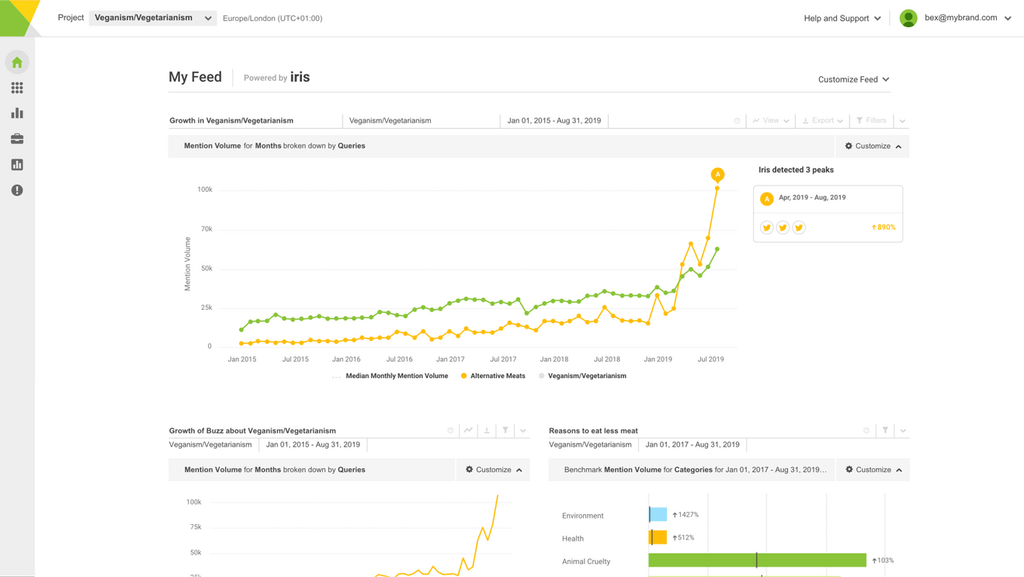Most people think Boolean search is all about keywords.
Stack enough ANDs, ORs, and NOTs together, and you’ve got a bulletproof query, right? Not quite.
Here’s the problem: Traditional Boolean search picks up what people are talking about – but not always how they’re talking about it. And when it comes to social listening, the real gold isn’t in generic industry chatter. It’s in the unfiltered, personal conversations that tell you what consumers actually think, feel, and struggle with.
The trick? Pronouns.
By adding a simple layer to your Boolean search – targeting posts that use words like I, me, we, my, our – you can filter for firsthand experiences and get straight to the insights that matter.
If you happened to catch our latest finance report, you might have noticed that we applied this exact Boolean search method to uncover some fascinating consumer insights. It’s a little trick we’ve been using to dive deeper into personal finance conversations, and it’s one of the most effective ways to capture unfiltered, real-world opinions.
Why this works
Think about it: A post that says, “Investing in crypto is risky,” is just general chatter. But a post that says, “I lost $5,000 in crypto and I’m never doing it again”? That’s raw consumer sentiment. That’s the stuff you want.
This approach helps you:
- Filter out corporate noise: No more endless articles, ads, or brand statements clogging your results.
- Capture real consumer pain points: People talk about their frustrations and successes differently when they’re sharing personal experiences.
- Spot early trends and shifts: Real consumers react to products, industries, and services faster than brands do.
How to build this Boolean query
If you want to find firsthand consumer discussions, add a pronoun-based NEAR operator to your query.
Something like this: (I OR me OR we OR us OR my OR mine OR ours OR our OR Im OR “I’m” OR Ive OR "I’d" OR "I’ll" OR "I’ve") NEAR/3 (your industry keywords)
This ensures that the search picks up personal statements tied directly to your topic. For example:
(I OR me OR my OR mine) NEAR/3 ("credit card fees" OR "savings account" OR investing OR "student loans")
This would surface posts like:
- “I hate my credit card fees”
- “My savings account interest is a joke”
- “I’m thinking about investing but don’t know where to start”
When to use this approach
- If you want real, personal discussions about a topic
- If you need consumer insights or pain points (great for marketing, UX, or product research)
- If you’re analyzing social sentiment rather than industry trends
Another time this might work particularly well is:
- If you are looking to evaluate purchase intent
If you’re looking to evaluate purchase intent, this approach can help you find people actively considering a product or service. Posts like “I’m thinking about buying...” or “I need a new...” often signal real-time interest, making it easier to spot demand, identify barriers to purchase, and understand what factors drive peoples’ decision-making. By capturing these personal statements, you can uncover what pushes consumers toward (or away from) a purchase.
When to tweak it
- If you need a broader view, combine this method with another Boolean query that includes expert sources, industry news, or company discussions.
- If you’re looking for solutions rather than problems, tweak the keyword list to include positive phrases like "I saved", "I invested", "I earned".
Possible downsides to keep in mind
While effective, this method has a few limitations. If you're after a broader view of a topic, it may miss out on insights from industry experts or general trends, as it focuses on those personal conversations.
Additionally, it might skew toward consumer complaints – people are more likely to share frustrations than successes, so you may get more pain points than positive experiences. If you're looking to understand buyer intent online, pay attention to the 'not' in people’s discussions about buying (or not buying) things. Phrases like 'not gonna,' 'do not,' or 'will not.' Be sure to factor these exclusions into your query.
Also, beware of a misplaced “NOT,” as it can unintentionally exclude specific topics or sets of keywords – especially if you forgot to close the brackets after it.
Finally, this approach works best on casual platforms like X or Reddit, where people are more likely to share personal thoughts and everyday experiences. It’s less effective in more professional spaces like LinkedIn, where the tone is more formal, and where people are a lot less likely to talk about things like shopping or personal habits.
Final thoughts
Traditional Boolean search gives you topics. This trick gives you stories. And if you want to understand what consumers actually think, those firsthand experiences are where the real insights live.
So next time you build a query, don’t just search for what people are talking about. Search for how they’re talking about it.



